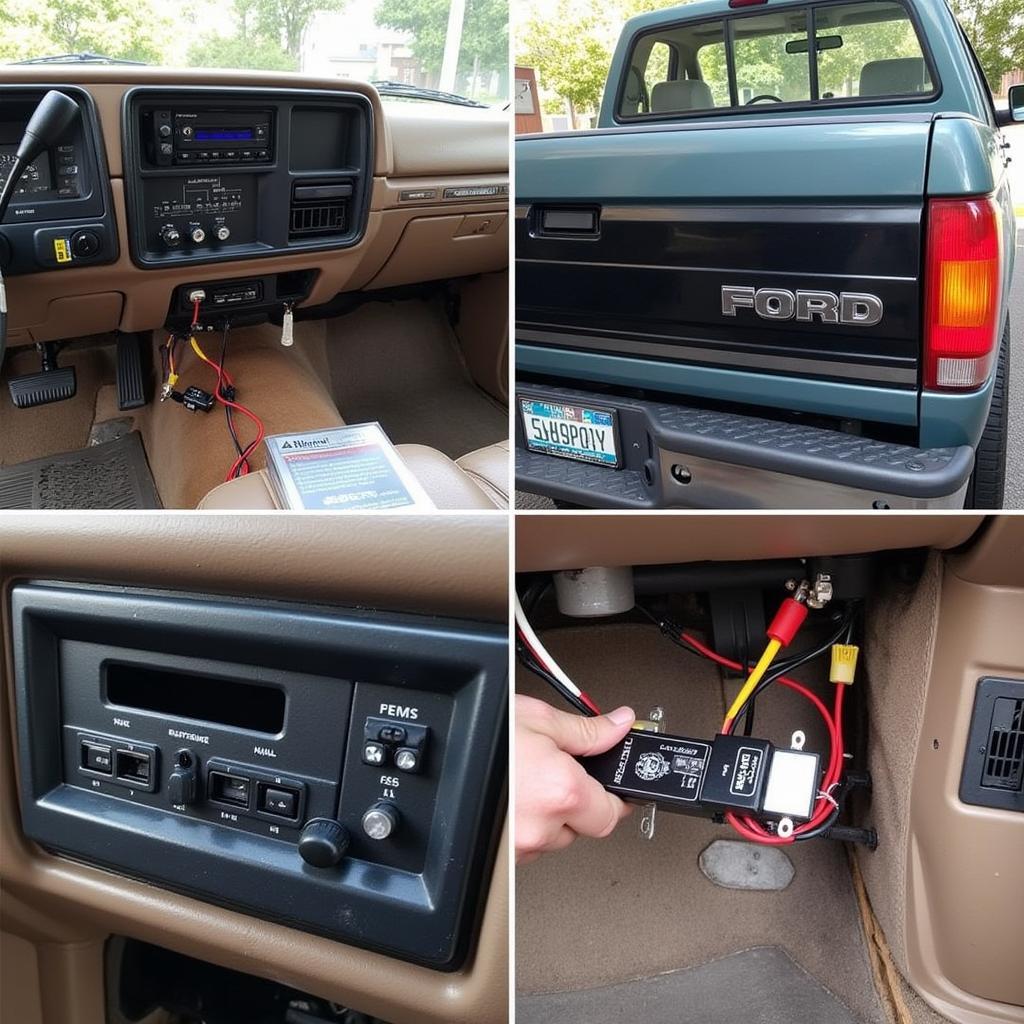Having trouble with your car’s anti-theft system? It can be frustrating when your vehicle refuses to start or behaves erratically. While attempting to “crack” an anti-theft password is illegal and strongly discouraged, this article will guide you on how to troubleshoot and address the underlying issues causing problems with your car’s immobilizer system.
Understanding Anti-Theft System Issues
Modern vehicles are equipped with sophisticated immobilizer systems that prevent theft by disabling the engine or fuel system unless the correct key is present. These systems rely on communication between the key’s transponder chip and the vehicle’s Engine Control Unit (ECU). When this communication is disrupted or there’s a malfunction, it can trigger anti-theft responses, preventing your car from starting.
Recognizing Anti-Theft System Malfunctions
Several indicators can point to a potential issue with your car’s anti-theft system:
- Engine Cranks but Won’t Start: This is one of the most common symptoms. The engine may turn over but fail to ignite.
- Rapidly Flashing Security Light: If the security or immobilizer warning light on your dashboard blinks rapidly, it usually signifies an issue with the anti-theft system.
- Key Not Detected: Some vehicles may display a “Key Not Detected” message on the instrument panel, indicating a problem with the key’s transponder chip or the vehicle’s antenna.
- Starter Disabled Message: Certain vehicles might show a “Starter Disabled” or a similar message on the dashboard.
Essential Tools for Diagnosis and Repair
To diagnose and potentially resolve anti-theft system problems, the following tools are often required:
- Diagnostic Scanner: A high-quality diagnostic scanner, like those offered by Cardiagtech, can read and interpret fault codes stored in the vehicle’s ECU, providing valuable insights into the issue.
- Programming/Re-Programming Tool: In some cases, reprogramming the key fobs or the vehicle’s immobilizer system might be necessary. Specialized tools are designed for this purpose.
- Basic Hand Tools: A set of basic hand tools, including screwdrivers, wrenches, and a multimeter, can be helpful for inspecting wiring and connections.
Troubleshooting and Resolution Steps
It’s crucial to remember that attempting to bypass or “crack” an anti-theft system without proper authorization is illegal and can damage your vehicle. Instead, focus on troubleshooting and resolving the underlying issue. Here’s a general guide:
- Check the Battery: A weak or dead battery can sometimes interfere with the anti-theft system. Ensure the battery is fully charged.
- Inspect the Key Fob: Examine your key fob for any physical damage or worn-out buttons. Try using the spare key to rule out a faulty key fob.
- Check for Wiring Issues: Inspect the wiring and connections around the ignition switch, ECU, and immobilizer system for any loose, damaged, or corroded wires.
- Consult a Professional: If the problem persists, it’s highly recommended to consult a qualified automotive electrician or take your vehicle to a trusted mechanic specializing in automotive electronics. They have the expertise and equipment to diagnose and repair complex anti-theft system problems.
Frequently Asked Questions
Q: Can I reset my car’s anti-theft system myself?
A: While some basic troubleshooting steps can be taken, resetting or reprogramming an anti-theft system often requires specialized tools and knowledge. It’s best to consult a professional to avoid potential damage.
Q: My car key’s battery is dead. Can this trigger the anti-theft system?
A: While a dead key fob battery might prevent you from remotely locking/unlocking your car, it shouldn’t typically trigger the immobilizer system. Most modern cars have a backup method, like a physical key slot, for such situations.
Q: How much does it cost to fix an anti-theft system problem?
A: The cost can vary significantly depending on the make and model of your vehicle, the specific issue, and labor rates in your area. A simple fix, like a loose connection, might be relatively inexpensive, while replacing a faulty ECU can be costly.
CARDIAGTECH offers a range of high-quality diagnostic and programming tools that can assist professionals in efficiently diagnosing and addressing anti-theft system problems. If you’re experiencing issues with your vehicle’s immobilizer, we recommend reaching out to a qualified technician who can utilize these tools to provide an accurate diagnosis and effective solutions.

